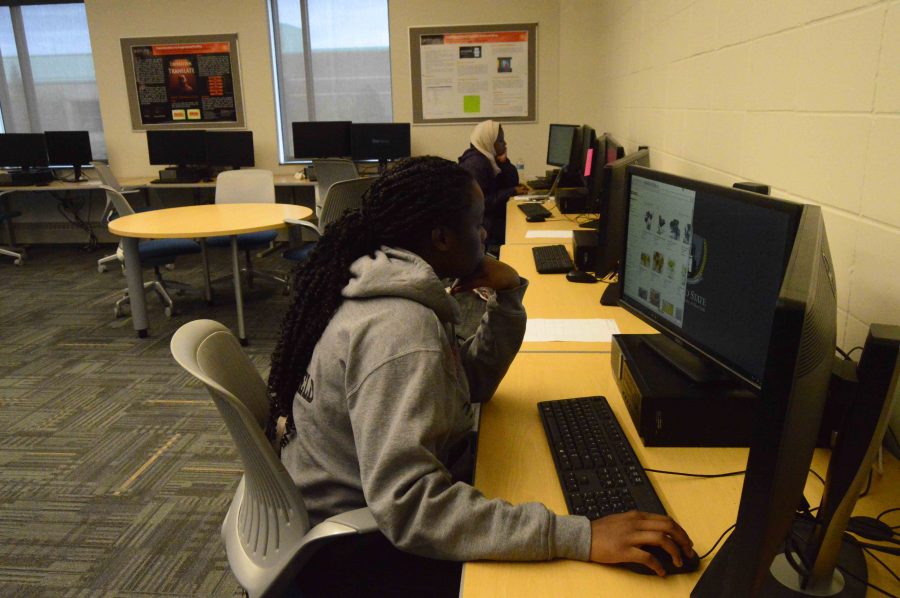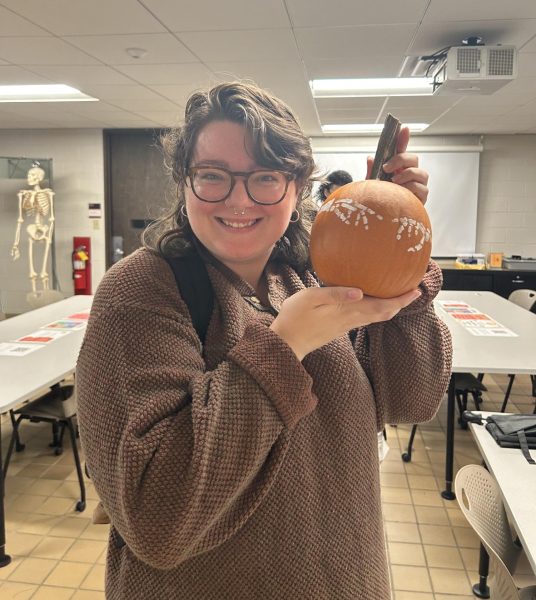Computer Information Systems programs helps local community
October 5, 2016
The computer science and technology industry is something that – although constant in our lives – is thoroughly misunderstood by most people. Basic computer knowledge may not seem to be hard to come by but it is something that is taken for granted.
By 2020, it is estimated that over 1.2 million jobs in the computer science field will be available, but not enough qualified Americans will be able to fill that void. Recruitment into the Advanced Placement college prep courses for computer science have seen a dramatic downturn over the past few years. Even though many of the available computer science jobs start pay at around $72,000 with the potential to go as high as $90,000.
So the question is: Why don’t people want to take these jobs? And how do you inspire students who are already in school to get interested in computer science?
Sarbani Banerjee, Ph.D., along with her team of professors at SUNY Buffalo State, said the steps necessary to improve and grow the field may not start on a college campus but rather in high school.
“We believe that if students aren’t interested here, due to focus on their own major or the stigmas that surround computer science so we need to work on getting them earlier,” Banerjee said. “That’s how a program like this helps us because if we can go into the classroom and meet younger students, that might encourage them to come here to Buffalo State.”
After receiving a Google grant worth $25,000, Dr. Banerjee and her team were able to create a program called Computer Science 4 High Schools, CS4HS, which allows teachers at Buffalo State to teach basic knowledge of multiple computer programs to other teachers and students.
The goal is that this community of teachers will take the knowledge learned from their workshops into the high school and middle school classrooms. Teachers want to inspire the youth to actually take part in technology by first establishing a computer club, and then potentially offering a computer science course.
“The main idea of why we got involved in this is because there is a major decline in computer science when everything is centered around computing,” said Dr. Ramona Santa Maria, professor of Computer Information Systems at Buffalo State. “We are in a situation where the demand is high, the use is high, but the enrollment is low, so this was a no brainer for us.”
This year on campus, a new course called Service Learning in Computing was developed that will put Buffalo State students into local schools, like McKinley Senior High School and School 79, which have a high population of “URM,” which is underrepresented minorities, and teach them basic knowledge around computer science.
“Computer science has a great impact on the nation and the world, every job has computer science associated with it, so you can work in health care and have computer science in it, or even business,” said Dr. Neal Mazur, associate professor for Computer Information at Buffalo State. “The point is the new curriculum is now designed to be more popular to different sectors of the population.”
With the lack of funding most schools get, combined with random budget cuts, schools and teachers simply do not have the resources available to foster a kid’s curiosity in computer science. Minorities are especially put at a disadvantage due to the focus on basic needs, and not extra-curricular activities, which is what computer science can be categorized as.
Banerjee’s program has already reached out to over 100 teachers and students teaching them how to create apps, different forms of coding, collecting data, and things as simple drawing a smiley face.
The stereotypes that surround computer science is the first hurdle that has led to the gap between jobs and people who are actually qualified. It is also wrongly believed that computer science is something that takes a high level of understanding in mathematics. Computer science also has the stigma that this field is for men and not women.
“People are interested in the use of technology but it’s difficult to get them interested in the programming,” Mazur said. “There is a disconnect between the use of technology and the creation of artifacts using computer science techniques. When people think of computer science they think you need the extensive background in mathematics but that’s just one aspect of it.”
After eliminating the stigma around computer science, it is then up to the teachers to give students an outlet to explore their curiosity. On campus, the Women for Computing Club will be going into classrooms to teach the “Hour of Coding” lesson to students and show them the many avenues that computer science can lead toward when searching for a career.
“We feel this is the ultimate recruitment tool for student engagement,” Santa Maria said. “The idea is to engage students at the middle and high school level in order for them to then look at Buffalo State. If we can get students with prior knowledge of computer science then it’s the best way for them to, eventually, be successful in our program here.”
This is a unique opportunity for the school and the students to become more civically engaged with the people in the community while shining a light on the efforts of the college.
“Computers are so much a part of our lives that is a crime we don’t teach it,” she said. “We are looking to make computer science into a more understandable language and a basic part of the curriculum. We all know the Three ‘R’s of education writing reading and arithmetic, but our goal is to make computers the fourth R.”
This program is then capped off ever spring and fall semester with a showcase where students, parents, and teachers can interact and share what they learned. Engaging with people with similar interest and being rewarded for it is just one way we can grow the computer science fields and keep more students interested in college.
email: [email protected]




